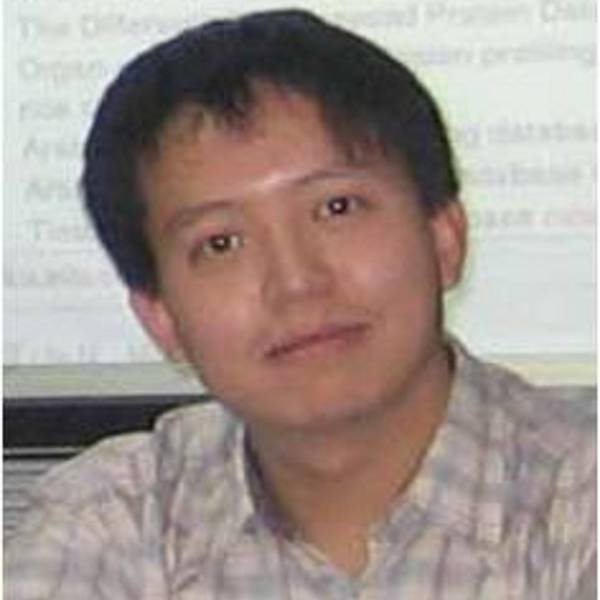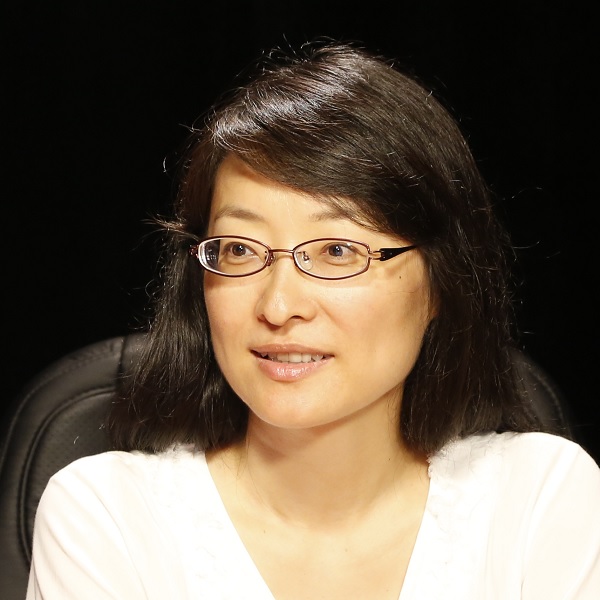- Level Foundation
- المدة
- الطبع بواسطة Peking University
-
Offered by

عن
欢迎选修北京大学MOOC课程“生物信息学:导论与方法”。 近三十年来,生命科学与计算科学飞速发展。生物信息学是一门生命科学与计算科学的前沿交叉学科。生物信息学产生和迅猛发展的主要推动力来自于新一代测序等高通量技术在生命科学领域越来越广泛的应用。目前,人和很多动植物的基因组已经被测序出来。已知DNA序列的数量已超过20兆亿碱基,每五个月翻一番。这些前所未有的大数据中蕴藏着很多尚不为人知的新发现、新知识,给生命科学研究带来新的历史机遇。但是同时,这些大数据不仅数量巨大、持续呈现指数增长的趋势,而且噪音高,异构程度高。准确、快速地分析这些数据需要先进的计算方法。 生物信息学是一门强大的新技术,是用来分析、存储、搜索海量生物医学数据的信息技术和计算技术。另一方面,生物信息学是一种研究生命科学问题的新方法、新思路,是一种从全基因组出发、从系统水平出发、基于数据整合,提出新假说、发现新规律的研究方法。在这门“生物信息学:导论与方法”网上课程中,我们将向您系统地讲授生物信息学主要概念及方法。课程内容从基础的序列比对开始,循序渐进,围绕深度测序数据分析、计算基因组学、分子通路鉴定等当前研究的前沿热点内容进行介绍与讨论。进一步地,我们会以我们实验室自己开发的算法、软件及数据库为例,告诉您如何开发新的生物信息学技术。我们将用具体实例展示给您,如何用生物信息学的方法及研究思路来解决生命科学里的实际问题。我们也邀请到几位生命科学领域资深教授介绍相关的生物信息学重要工作及生物信息学在生命科学中的作用。 本课程材料采用 CC BY-NC-SA 协议开放共享。الوحدات
第一课
2
Videos
- 课程介绍
- 什么是生物信息学
第二课
2
Videos
- 生物信息学历史
- 中国大陆的生物信息学
补充材料
2
Readings
- 阅读参考
- 讲义
小测
1
Assignment
- 导论与历史
第一课
1
Videos
- 序列比对中的基本概念
第二课
2
Videos
- 利用动态规划进行全局比对
- 从全局比对到局部比对
第三课
1
Videos
- 考虑仿射空位罚分的序列比对,以及如何计算Needleman-Wunsch算法的时间复杂度
补充材料
4
Videos
- 关于同源、相似性、相似性矩阵和点阵图
- M.S. Waterman教授访谈
- 学生课堂报告(一)
- 学生课堂报告(二)
2
Readings
- 阅读参考
- 讲义
小测
1
Assignment
- 序列比对
第一课
2
Videos
- 序列数据库
- BLAST算法初探
补充材料
1
Videos
- 学生课堂报告
2
Readings
- 阅读参考
- 讲义
小测
1
Assignment
- 序列数据库搜索
第一课
3
Videos
- 从状态到马尔可夫链
- 隐马尔可夫模型
- 用隐马尔可夫模型建立预测模型
补充材料
4
Videos
- 学生课堂报告(一)
- 学生课堂报告(二)
- 学生课堂报告(三)
- 学生实践
2
Readings
- 阅读参考
- 讲义
小测
1
Assignment
- 马尔可夫模型
第一课
2
Videos
- 新一代测序
- 序列回帖和变异鉴定
讲解演示
1
Videos
- 序列回帖和变异鉴定的分析演示
补充材料(一)
2
Videos
- 关于回帖、变异鉴定
- 关于基因型鉴定
补充材料(二)
2
Videos
- Ion Torrent PGM测序介绍
- 3730 Sanger测序介绍
2
Readings
- 阅读参考
- 讲义
小测
1
Assignment
- 新一代测序NGS:重测序的回帖和变异鉴定
第一课
2
Videos
- 问题概述
- 记录变异的数据库
第二课
2
Videos
- 基于保守性和规则的预测方法:SIFT和PolyPhen
- 基于机器学习分类器的预测方法:SAPRED
补充材料
2
Videos
- 支持向量机简介
- 学生课堂报告
2
Readings
- 阅读参考
- 讲义
小测
1
Assignment
- 变异的功能预测
期中考试
1
Assignment
- 期中考试
第一课
1
Videos
- 转录组介绍
讲解演示
2
Videos
- RNA测序数据回帖与组装
- RNA-seq数据分析
Maynard Olson教授访谈
1
Videos
- Maynard Olson教授访谈
补充材料
5
Videos
- 学生课堂报告(一)
- 学生课堂报告(二)
- 学生课堂报告(三)
- 学生课堂报告(四)
- 学生实践
2
Readings
- 阅读参考
- 讲义
小测
1
Assignment
- 新一代测序NGS:转录组分析RNA-Seq
第一课
1
Videos
- 从信息到知识
第二课
2
Videos
- 数据挖掘: 长非编码RNA的鉴定
- 数据挖掘: 差异表达与聚类分析
补充材料
2
Videos
- 变量选择与聚类分析
- Illumina HiSeq & MiSeq测序仪介绍
2
Readings
- 阅读参考
- 讲义
小测
1
Assignment
- 非编码RNA的预测及分析
第一课
1
Videos
- 本体论和基因本体论
第二课
2
Videos
- KEGG分子通路数据库
- GO注释
第三课
2
Videos
- 分子通路鉴定
- 应用:药物成瘾共同分子通路的鉴定
补充材料
3
Videos
- 数据库系统简介
- KOBAS演示
- 学生演示KOBAS
2
Readings
- 阅读参考
- 讲义
小测
1
Assignment
- 本体论、分子通路鉴定
第一课
1
Videos
- 生物信息资源概览
第二课
4
Videos
- 美国国家生物信息中心(NCBI)资源
- 欧洲生物信息中心(EBI)资源
- UCSC基因组浏览器
- 其他主要生物信息资源
补充材料
1
Videos
- 学生介绍CBI资源
1
Readings
- 讲义
小测
1
Assignment
- 生物信息数据库及软件资源
第一课
2
Videos
- 新基因鉴定及演化分析: 概念与实例
- 新基因鉴定及演化分析: 大脑演化的驱动力
第二课
2
Videos
- 从非编码RNA起源的从头起源新基因
- 一个与成瘾相关的人类特异的从头起源的新基因
补充材料
1
Videos
- 学生课堂报告
2
Readings
- 阅读参考
- 讲义
小测
1
Assignment
- 新基因起源
第一课
2
Videos
- 从干实验到湿实验——一个演化问题 第1部分
- 从干实验到湿实验——一个演化问题 第2部分
裴钢教授访谈
2
Videos
- 裴钢教授关于研究背景的介绍
- 裴钢教授访谈
补充材料
1
Videos
- 学生课堂报告
1
Readings
- 讲义
期末考试
1
Assignment
- 期末考试
Auto Summary
Welcome to the Peking University MOOC course "Bioinformatics: Introduction and Methods." This course delves into the rapidly evolving intersection of life sciences and computational sciences, focusing on the burgeoning field of bioinformatics. As a cutting-edge discipline, bioinformatics leverages high-throughput technologies like next-generation sequencing to address the massive data influx in life sciences. With over 20 trillion bases of known DNA sequences doubling every five months, the field promises groundbreaking discoveries and new knowledge, presenting a historic opportunity for life science research. The course offers a comprehensive introduction to the primary concepts and methods of bioinformatics, ideal for those interested in health and fitness domains. It begins with fundamental sequence alignment techniques and progressively covers advanced topics such as deep sequencing data analysis, computational genomics, and molecular pathway identification. Additionally, the course features practical examples and discusses novel bioinformatics technologies developed by our lab, demonstrating how these methods can solve real-world biological problems. Led by esteemed instructors, including seasoned professors from the life sciences field, the course provides insights into significant bioinformatics work and its impact on life sciences. Available on Coursera, this foundational course is offered through a flexible subscription model, with Starter and Professional options to cater to various learning needs. This course is perfect for anyone looking to gain a solid understanding of bioinformatics and its applications in the modern scientific landscape. Join us to explore the powerful intersection of biology and computational science, and unlock new potentials in life science research.

Ge Gao 高歌, Ph.D.

Liping Wei 魏丽萍, Ph.D.

